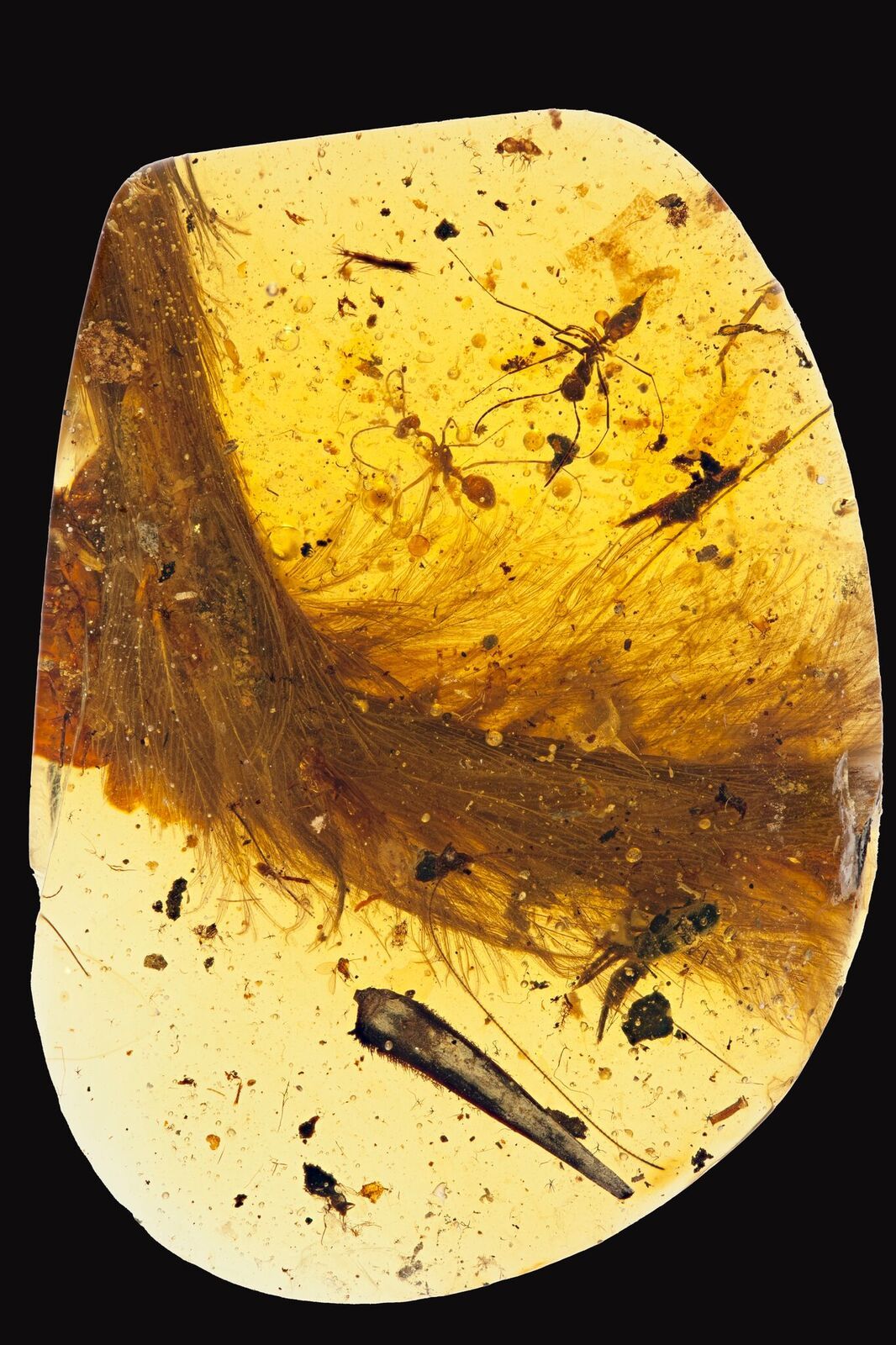University of Alberta paleontologists have helped to make a new dinosaur discovery.

The local paleontologists joined a team of international researchers that found a tiny segment of dinosaur tail preserved in a nugget of amber from Myanmar.
“The little tail comes from a dinosaur probably about the size of a robin. It may be hatchling or possibly an extremely small species that’s new to science,” U of A paleontologist Scott Persons said.
“The shape of the tail vertebrae, suggests the dinosaur was a two-legged carnivore.”
READ MORE: Feathered dinosaurs may have ‘flocked’ together like modern birds: University of Alberta study
Persons said the specimen contains a little bit of bone, but is loaded with surprises. Next to the dinosaur are the bodies of two prehistoric ants that got stuck, about 99 million years ago.
The tail is covered with feathers, unlike any that have been previously discovered.
“Normally a fossil feather has been squished flat by the weight of the sediment and rocks that buried it,” Persons said.
“But the tree resin hardened around the tail feathers before they were buried and that has preserved them in perfect three-dimensional form.”
READ MORE: New species of dinosaur found in Alberta’s Badlands
It gives researchers new insight into the way feathers have evolved since prehistoric times.
Additionally, X-ray and electron microscope examinations of the amber found high concentrations of ferrous iron in the dried remains of the tail. Researchers think this is the residue of hemoglobin or fossil blood that mosquitoes didn’t require.
READ MORE: New horned dinosaur discovered in Alberta
“Science has great track records on achieving things that are logically possible but empirically implausible,” U of A paleontologist Tetsuto Miyashita said.
“When Jurassic Park hit the theatres, we didn’t even have a draft human genome. Now we have decoded genomes from dozens of species, including even that of the Neanderthals.”
The discovery has been published in Current Biology.










Comments